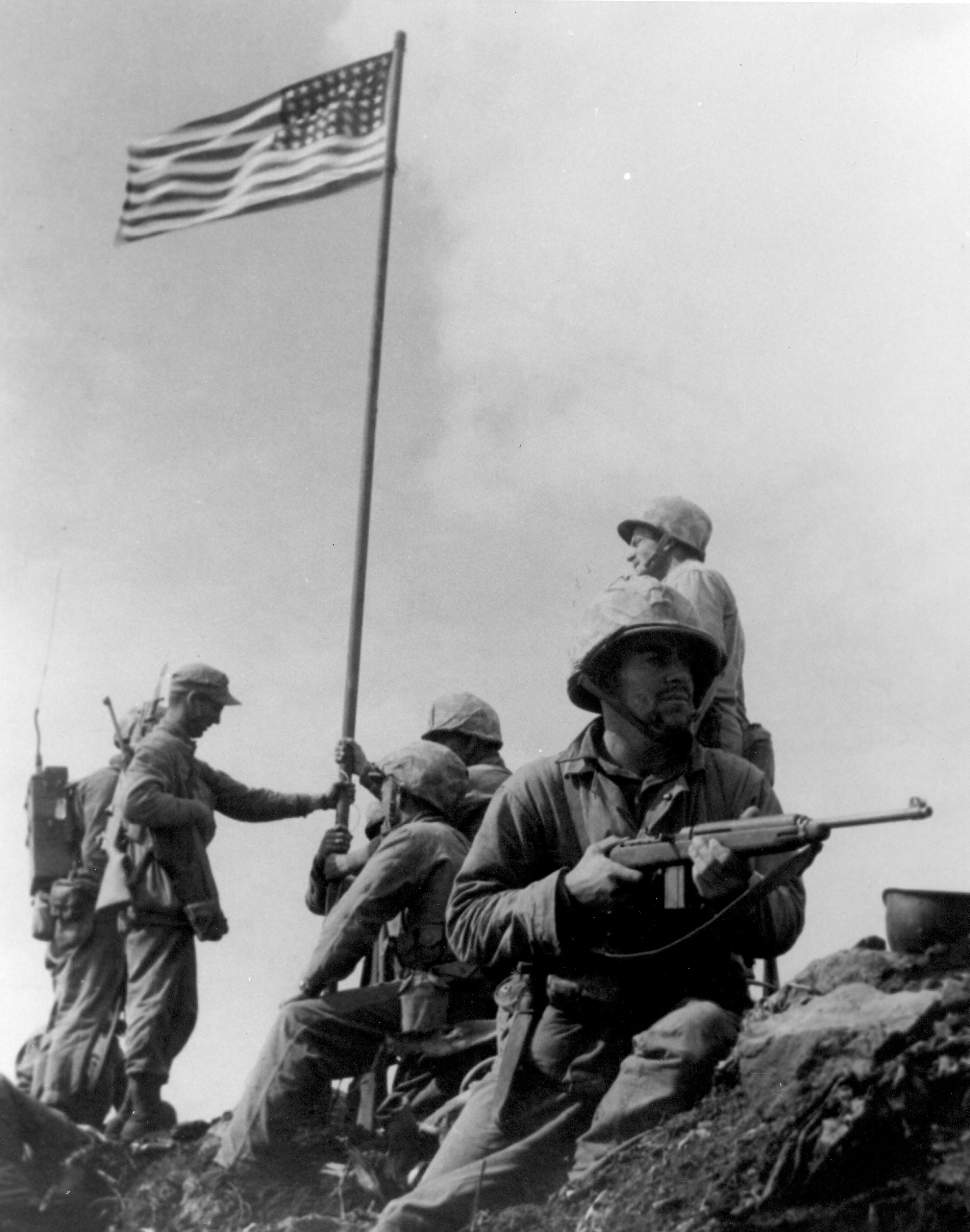Song honors soldier who raised Iwo Jima flag
By Kim Briggeman
There is so much more to the story, and Jack Gladstone is determined to tell it.
"This is a coming out of the bear's den for this grizzly," Montana's Native "PoetSinger" from Kalispell and the Blackfeet Indian Nation said last week.
Gladstone is making an epic cut he calls "Remembering Private Charlo" into an 11-minute, 45-second centerpiece for his first new CD in seven years, one he's calling "Native Anthropology."
On Tuesday, the 65th anniversary of the raising of the flag on Mount Suribachi on the tiny Japanese island in the South Pacific, Gladstone will be in the second day of a recording session in Tucson, Ariz. He'll be working with the likes of Montana virtuoso David Griffith and Will Clipman, a percussionist-drummer for Native flutist R. Carlos Nakai. Clipman, like Nakai, is a multi-Grammy nominee.
On the morning of Feb. 23, "Chuck" Charlo was one of four men selected to scale the island's tallest feature, Mount Suribachi, in what many saw as a suicidal mission. They made it unscathed.
Gladstone has meticulously researched the battle and Charlo's part in it--"I probably know more than I emotionally should be allowed to know without having been there," he said.
The four-man squad then retreated down the slopes, but later in the day joined a 40-man platoon that went back up. There's debate about whether Charlo physically helped plant the first flag. Gladstone is convinced he was, based on a conversation with Chuck Lindberg.
Once there; Lt. Schrier, Plt. Sgt. Ernest I. “Boots” Thomas, Sgt. Henry Hansen, Cpl Charles W. Lindberg (a flame thrower) attached the flag to the pole while PFC James Michels (or Michaels) held the pole and PFC Raymond Jacobs, radioman from Fox Company, looked on. At 10:20 five men raised the first flag. Four of the flag raisers were Schrier, Thomas, Hansen and Lindberg. The fifth flag raiser is unclear. Some sources reported either Michels or PFC Louis Charlo as the fifth man. Others report six original flag raisers, which include both Michels and Charlo.
For more on the subject, see Flags of Our Father.
Below: Lowery's most widely circulated picture of the first flag raising.


No comments:
Post a Comment